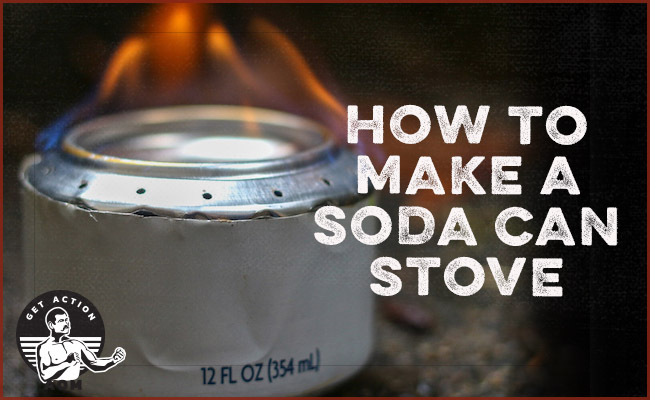Diehard backpackers are always trying to find ways to cut weight from their pack, and one of the heaviest things they can carry is a cookstove. While there are loads of ultralight, advanced stoves on the market, few can compete with the simplicity and supreme frugality of a traditional alcohol-burning stove. While purchasable backpacking stoves can cost $40 on up (even a simple manufactured alcohol stove can set you back $20), you can create your own for less than 50 cents. A DIY alcohol stove also compares favorably to the premade variety, coming in at about 1 ounce compared to 2.5 ounces. And the best part is that you can make this stove yourself in an afternoon with just basic tools and a couple aluminum cans. Of course, buyable stoves come with more features, but for the price and effort, the DIY version is hard to beat.
Do keep in mind that many backcountry areas and national parks don’t allow alcohol-burning stoves because they don’t have many of the integrated safety features that modern stoves do. But, where allowed or simply as an emergency back-up in survival scenarios, an alcohol stove is a wonderful addition to your gear list. Here’s how to make one.
Supplies/Tools
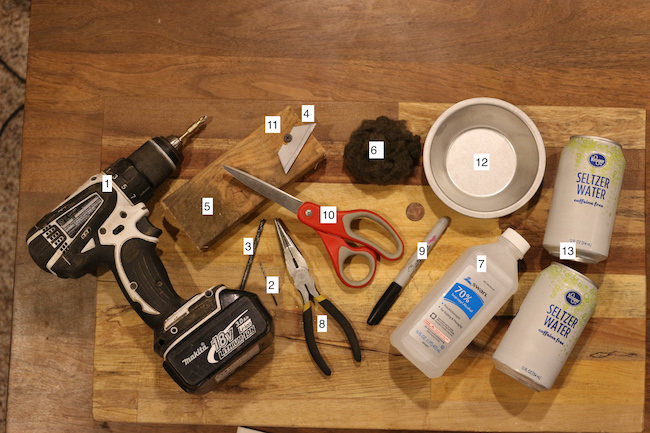
- Drill
- 1/16th drill bit
- 3/16th drill bit
- Razor blade
- Piece of wood that’s 2″ thick
- Cotton or fiberglass insulation
- Denatured alcohol
- Pliers
- Permanent marker
- Scissors
- Screw
- Shallow metal bowl
- Two (2) 12oz soda cans
Constructing the Stove
Step 1: Mark and drill holes in can.

Mark out 16 evenly spaced holes around the bottom lip of one of your cans. Use a 1/16″ drill bit to bore out holes at each mark.
Step 2: Trace penny on bottom of can and drill a few more holes.
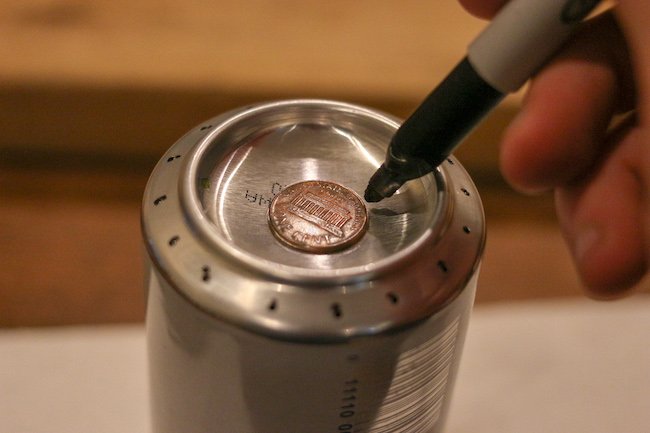
Use a penny to trace a circle on the bottom of the same can from Step 1.

Mark and drill five holes within this circle, one in the center, and four evenly spaced around the center. Use a 3/16″ drill bit for the center hole, and a 1/16″ drill bit for the four around it.

You can see my holes don’t line up with my marks; I made them a little too close together, so had to improvise just a little when it came to drilling.
Step 3: Cut base off both cans.
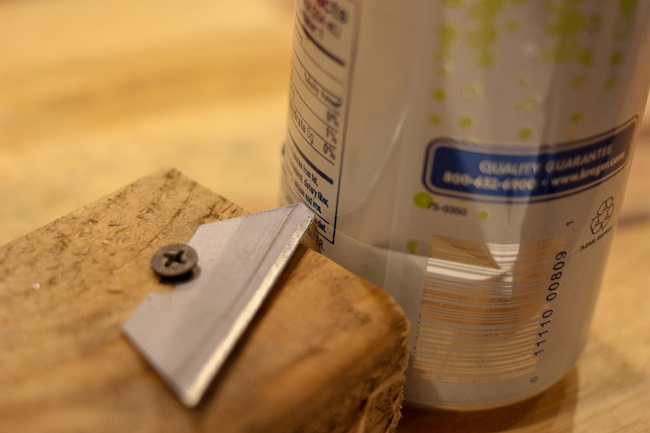
First, attach a utility blade to a scrap of 2×4 (or really any piece of scrap wood that’s about 2″ thick), so that the point of the blade just barely extends beyond the edge of the board. Note, you need to attach the blade to the broad side of the board. This keeps the cut line perfectly level rather than trying to do it by hand.
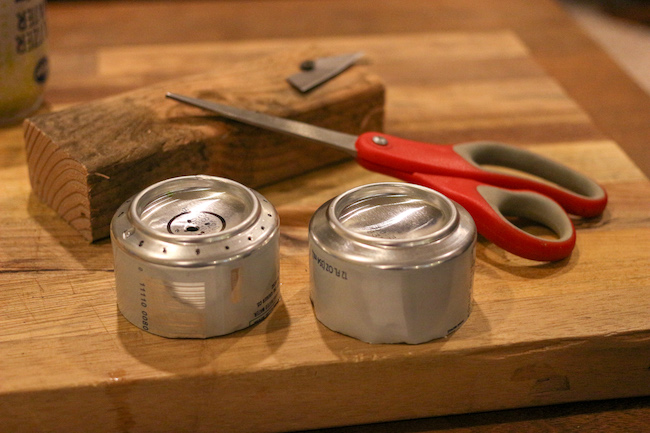
Proceed to cut the base off both of your cans by rotating it against the edge of the utility blade. Do a few passes before separating the base from the can. It may help to depress the can just below the cut with your thumb to help the pieces separate. Clean up any jagged edges with scissors or sandpaper.
The base you drilled holes in is your stove top. The other base is your stove bottom.
Step 4: Crimp the top part.
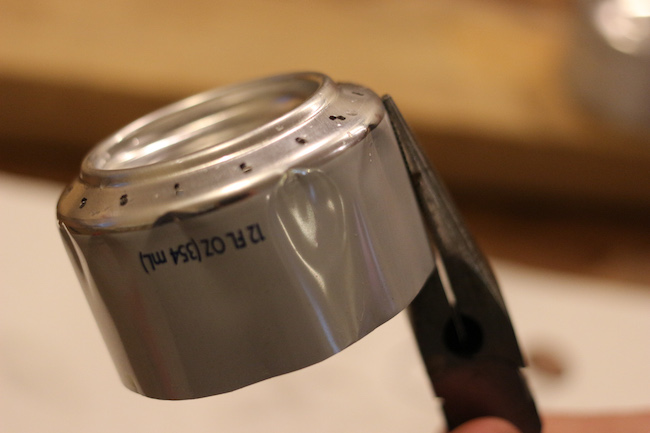
Use pliers to crimp around the edge of your stove’s top, so that it will fit snugly inside your stove bottom.
Step 5: Add firestarter to base, and put stove together.

Place a bit of cotton, fiberglass insulation, or homemade char cloth into the base of your stove, and then slide the crimped top into the base. If you want, you can also apply a high-temp epoxy to make a tighter seal.
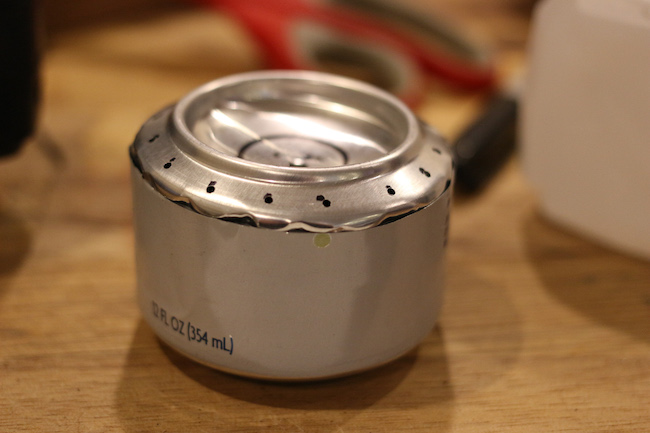
Lighting the Stove
Be sure to test your stove outside, away from flammable material.
Step 1: Place the stove in a small metal bowl.
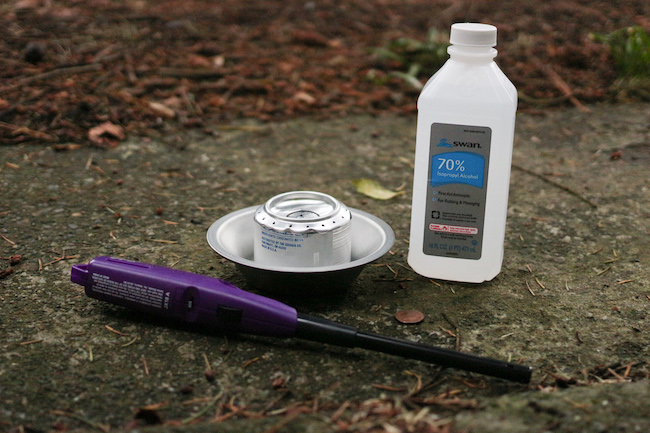
Of course, when in the wild you may not have a metal bowl. That’s okay. Also, rather than a large bottle of alcohol and a stick lighter, your actual gear list is probably more likely to include a small travel bottle of alcohol (like an emptied travel shampoo bottle or something) and a small case for your DIY waterproof matches.
If you don’t have a metal bowl, a large upturned metal lid also works. This holds excess fuel and adds a measure of safety to the fire.
Step 2: Add fuel to your stove.
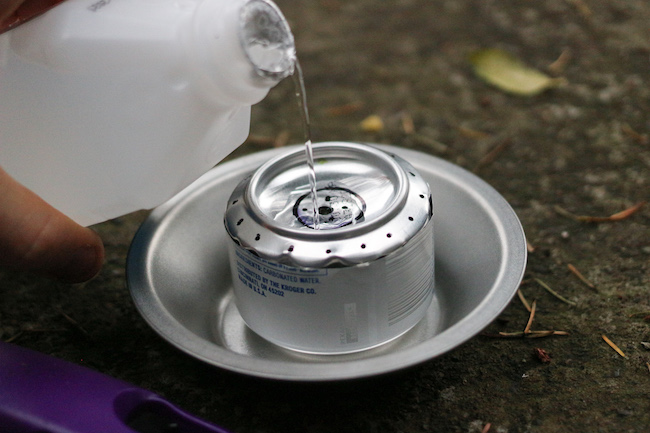
Pour about an ounce of alcohol (good for ~10 minutes of burning) into the center holes at the top of your stove, and a bit of additional fuel into the bowl your stove is sitting in. Finally, place the penny at the center of your stove, and add a dash of fuel to the top it. (The fuel in the bowl and on top of the penny will help prime your stove.)
Step 3: Light!

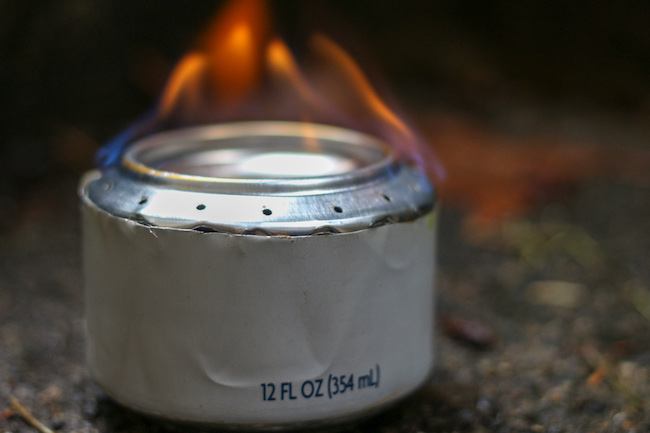
Light the fuel in the bowl and on top of the penny. After about a minute, the stove should prime automatically, and you’ll see blue flames emanating from each of your 16 drilled holes.


